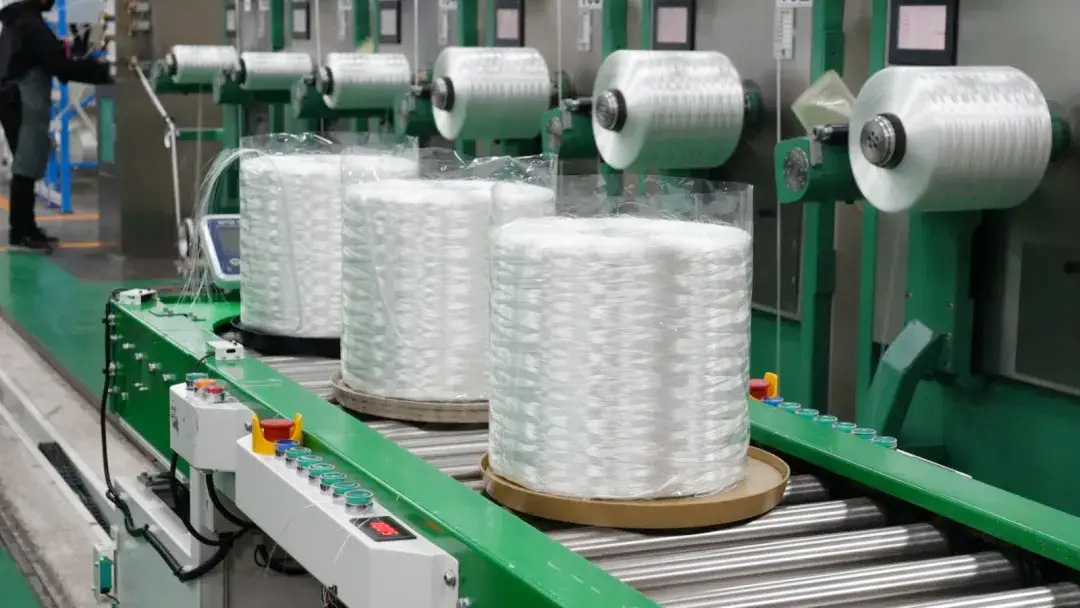Silica (SiO2) plays an absolutely pivotal and fundamental role in E-glass, forming the bedrock for all of its excellent properties. Simply put, silica is the “network former” or “skeleton” of E-glass. Its function can be specifically categorized into the following areas:
1. Formation of the Glass Network Structure (Core Function)
This is the most fundamental function of silica. Silica is a glass-forming oxide itself. Its SiO4 tetrahedra are connected to one another through bridging oxygen atoms, forming a continuous, robust, and random three-dimensional network structure.
- Analogy: This is like the steel skeleton of a house under construction. Silica provides the main framework for the entire glass structure, while other components (such as calcium oxide, aluminum oxide, boron oxide, etc.) are the materials that fill in or modify this skeleton to adjust performance.
- Without this silica skeleton, a stable glassy state substance cannot be formed.
2. Provision of Excellent Electrical Insulation Performance
- High Electrical Resistivity: Silica itself has extremely low ion mobility, and the chemical bond (Si-O bond) is very stable and strong, making it difficult to ionize. The continuous network it forms greatly restricts the movement of electric charges, giving E-glass very high volume resistivity and surface resistivity.
- Low Dielectric Constant and Low Dielectric Loss: E-glass’s dielectric properties are very stable at high frequencies and high temperatures. This is mainly due to the symmetry and stability of the SiO2 network structure, which results in a low degree of polarization and minimal energy loss (conversion to heat) in a high-frequency electric field. This makes it ideal for use as a reinforcement material in electronic circuit boards (PCBs) and high-voltage insulators.
3. Ensuring Good Chemical Stability
E-glass exhibits excellent resistance to water, acids (except hydrofluoric and hot phosphoric acid), and chemicals.
- Inert Surface: The dense Si-O-Si network has very low chemical activity and does not easily react with water or H+ ions. Therefore, its hydrolysis resistance and acid resistance are very good. This ensures that composite materials reinforced by E-glass fiber maintain their performance over the long term, even in harsh environments.
4. Contribution to High Mechanical Strength
Although the final strength of glass fibers is also greatly influenced by factors such as surface defects and micro-cracks, their theoretical strength largely stems from the strong Si-O covalent bonds and the three-dimensional network structure.
- High Bond Energy: The bond energy of the Si-O bond is very high, which makes the glass skeleton itself extremely robust, providing the fiber with high tensile strength and elastic modulus.
5. Imparting Ideal Thermal Properties
- Low Thermal Expansion Coefficient: Silica itself has a very low coefficient of thermal expansion. Because it serves as the main skeleton, E-glass also has a relatively low thermal expansion coefficient. This means it has good dimensional stability during temperature changes and is less likely to generate excessive stress due to thermal expansion and contraction.
- High Softening Point: Silica’s melting point is extremely high (approximately 1723∘C). Although the addition of other fluxing oxides lowers the final melting temperature of E-glass, its SiO2 core still ensures the glass has a sufficiently high softening point and thermal stability to meet the requirements of most applications.
In a typical E-glass composition, the silica content is usually 52%−56% (by weight), making it the single largest oxide component. It defines the fundamental properties of the glass.
Division of Labor among Oxides in E-Glass:
- SiO2 (Silica): Main skeleton; provides structural stability, electrical insulation, chemical durability, and strength.
- Al2O3 (Alumina): Auxiliary network former and stabilizer; increases chemical stability, mechanical strength, and reduces devitrification tendency.
- B2O3 (Boron Oxide): Flux and property modifier; significantly lowers the melting temperature (energy saving) while improving thermal and electrical properties.
- CaO/MgO (Calcium Oxide/Magnesium Oxide): Flux and stabilizer; aids in melting and adjusts chemical durability and devitrification properties.
Post time: Oct-10-2025






